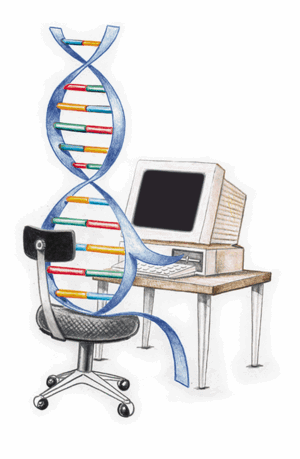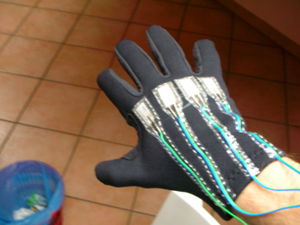Difference between revisions of "User:GabrieleValentini"
(→Currently Working) |
|||
| (3 intermediate revisions by one other user not shown) | |||
| Line 3: | Line 3: | ||
|firstname=Gabriele | |firstname=Gabriele | ||
|lastname=Valentini | |lastname=Valentini | ||
| + | |photo=DSCN1731.JPG | ||
|email=gabriele.valentini@mail.polimi.it | |email=gabriele.valentini@mail.polimi.it | ||
|advisor=MatteoMatteucci; LuigiMalago | |advisor=MatteoMatteucci; LuigiMalago | ||
| − | | | + | |status=inactive |
}} | }} | ||
| − | |||
== Brief Curricula== | == Brief Curricula== | ||
'''English.''' | '''English.''' | ||
| Line 18: | Line 18: | ||
===Currently Working=== | ===Currently Working=== | ||
{{Project template | {{Project template | ||
| − | |title=[[Evoptool: | + | |title=[[Evoptool: Evolutionary Optimization Tool]] |
|tutor=[[User:LuigiMalago|Luigi Malago]] | |tutor=[[User:LuigiMalago|Luigi Malago]] | ||
|description= Combining Estimation of Distribution Algorithms and other Evolutionary techniques for combinatorial optimization. Computer vision provides a large number of optimization problems, such as new-view synthesis, image segmentation, panorama stitching and texture restoration, among the others, (6). One common approach in this context is based on the use of binary Markov Random Fields and on the formalization of the optimization problem as the minimum of an energy function expressed as a square-free polynomial, (5). We are interested in the proposal, comparison and evaluation of different Estimation of Distribution Algorithms for solving real world problems that appear in computer vision | |description= Combining Estimation of Distribution Algorithms and other Evolutionary techniques for combinatorial optimization. Computer vision provides a large number of optimization problems, such as new-view synthesis, image segmentation, panorama stitching and texture restoration, among the others, (6). One common approach in this context is based on the use of binary Markov Random Fields and on the formalization of the optimization problem as the minimum of an energy function expressed as a square-free polynomial, (5). We are interested in the proposal, comparison and evaluation of different Estimation of Distribution Algorithms for solving real world problems that appear in computer vision | ||
| Line 28: | Line 28: | ||
|title=[[PolyGlove: a body-based haptic interface]] | |title=[[PolyGlove: a body-based haptic interface]] | ||
|tutor=[[User:GiuseppinaGini|Giuseppina Gini]] | |tutor=[[User:GiuseppinaGini|Giuseppina Gini]] | ||
| − | |description= PolyGlove is a new kind of haptic | + | |description= PolyGlove is a new kind of haptic interface, that try to overcome the limits of the current datagloves exploiting the technology of Electro Active Polymers (EAP). PolyGlove is desined to perfom both the force and tactile feedbacks, and it does it with several different technologies as polymeric piezo-films, elastomers and eletroheological fluids. |
|image=DSCN0522.JPG}} | |image=DSCN0522.JPG}} | ||
Latest revision as of 12:46, 28 December 2011
Gabriele Valentini
| |
| First Name: | Gabriele |
| Last Name: | Valentini |
| E-Mail: | gabriele.valentini@mail.polimi.it |
| Advisor: | |
| Project page(s): | PolyGlove: a body-based haptic interface |
| Status: | inactive |
Brief Curricula
English. Gabriele Valentini was born in Desenzano Del Garda, Italy in 1985. At this moment, he is a master level student of Politecnico di Milano. From march 2009 to July of the same year, he perfom the activity of tutoring for the Software Engineering course at Politecnico di Milano. He received his bachelor degree in Computer Science Engineering in 2008 at Politecnico di Milano with the thesis PolyGlove: a Body-Based Haptic Interface. In the same year, he obtains the ETS certification of knowledge of english language, with the Test of English as a Foreign Language (TOEFL-IBT). In the year 2004, he obtains the higth level school graduation in Information Tecnologies at Industrial and Technical Institute of Brescia Benedetto Castelli (ITIS).
Italian. Attualmente iscritto presso il Politecnico di Milano, frequentante il primo anno della Laurea Specialistica in Ingegneria Informatica. Dal marzo 2009 al luglio dello stesso anno, svolge l'attività di tutoring per il corso di Ingegneria del Software al Politecnico di Milano. Ottiene la Laurea in Ingegneria Informatica nell’anno 2008 alla Facoltà di Ingegneria dell’Informazione presso il Politecnico di Milano con la tesi PolyGlove: a Body-Based Haptic Interface. Nello stesso anno ottiene la certificazione ETS di conoscenza della lingua inglese, superando il Test of English as a Foreign Language (TOEFL-IBT). Nell’anno 2004 si diploma all’Istituto Tecnico Industriale Statale Benedetto Castelli di Brescia (ITIS), ottenendo il Diploma di Perito Informatico.
Projects
Currently Working
| Title: | Evoptool: Evolutionary Optimization Tool | |
|---|---|---|
| Description: | Combining Estimation of Distribution Algorithms and other Evolutionary techniques for combinatorial optimization. Computer vision provides a large number of optimization problems, such as new-view synthesis, image segmentation, panorama stitching and texture restoration, among the others, (6). One common approach in this context is based on the use of binary Markov Random Fields and on the formalization of the optimization problem as the minimum of an energy function expressed as a square-free polynomial, (5). We are interested in the proposal, comparison and evaluation of different Estimation of Distribution Algorithms for solving real world problems that appear in computer vision | |
| Tutor: | Luigi Malago | |
| Start: | Anytime | |
| Number of students: | 1 | |
| CFU: | 5 |
Past Works
| Title: | PolyGlove: a body-based haptic interface | |
|---|---|---|
| Description: | PolyGlove is a new kind of haptic interface, that try to overcome the limits of the current datagloves exploiting the technology of Electro Active Polymers (EAP). PolyGlove is desined to perfom both the force and tactile feedbacks, and it does it with several different technologies as polymeric piezo-films, elastomers and eletroheological fluids. | |
| Tutor: | Giuseppina Gini | |
| Start: | Anytime | |
| Number of students: | 1 | |
| CFU: | 5 |
Have Some Fun
- Genetic Algorithms



